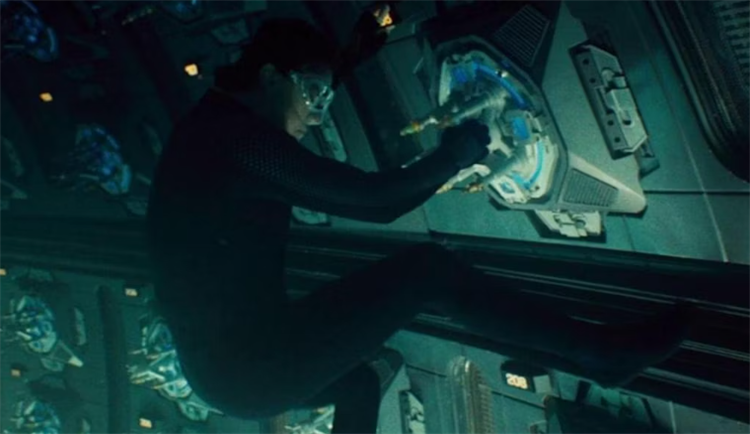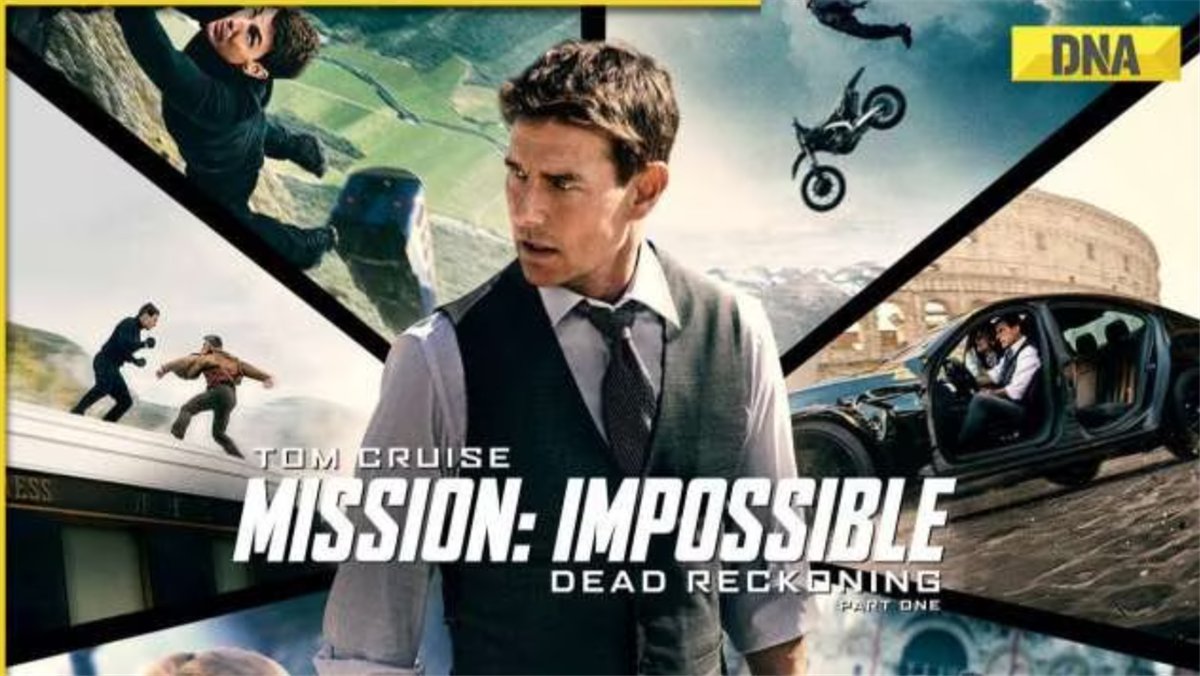Over the years, the Mission: Impossible franchise has featured no shortage of amazing action sequences and wild stunts. Many of the stunts are legitimately performed by Tom Cruise, as he’s risked life and limb to push the envelope for some of the franchise’s biggest moments. Some of those stunts include performing a live HALO jump in Mission: Impossible – Fallout, hanging from the side of the Burj Khalifa in Mission: Impossible – Ghost Protocol, and scaling the Dead Horse Point in Mission: Impossible 2. In every entry of the franchise, Cruise performs multiple wild new stunts to continue wowing audiences across the globe and delivering a unique cinematic experience. However, one of the wildest stunts ever is undoubtedly the underwater heist sequence featured in Mission: Impossible – Rogue Nation. This is easily one of the more unique and boldest stunt sequences featured in the franchise, one in which Cruise actually trained to hold his breath incredibly long underwater, and we’re going to highlight why this sequence was so special.
Why Is ‘Mission: Impossible – Rogue Nation’s Underwater Heist the Franchise’s Best Stunt?
Going back to the 1996 original Mission: Impossible film by Brian De Palma, the best sequences in the franchise are those that have a tense slow burn and buildup, usually with Cruise’s Ethan Hunt attempting some insanely scary feat in a high-security facility to achieve his goal. In the first movie, the recently disavowed and rogue IMF agent Hunt and his team must stage a daring break-in at CIA headquarters in Langley, Virginia to steal the NOC List. This involves Hunt sneaking into a highly secure computer database room through the ventilation system. If he makes any type of noise or touches the ground at all, it would set off an alarm, and the team would be finished. The underwater heist sequence in Rogue Nation is great because it very much honors the tradition and style of the original film’s unique heist scene that became an iconic and trendsetting scene for 90s thrillers and action movies.
Another great feature of the underwater heist sequence from Rogue Nation is its originality. The Mission: Impossible films had never attempted a water-based sequence such as this before, where Ethan was forced to dive underwater and forced to hold his breath for a frighteningly long period of time. So while this was already the fifth entry of the film series, writer-director Christopher McQuarrie and producer and star Tom Cruise were smart to stage a new type of scene the franchise had never truly attempted before.
The premise of the underwater sequence is simple enough. Hunt has to infiltrate an underwater security vault so his friend and teammate Benji Dunn (Simon Pegg) can infiltrate a data facility to steal a digital file to help expose The Syndicate, led by Solomon Lane (Sean Harris). However, the underwater vault has sensors that can detect any metal, so Hunt can’t use any oxygen tanks while dealing with the underwater vault, meaning he must hold his breath for as long as three minutes to assist Benji to covertly enter the facility and steal the digital file.
The underwater vault is a veritable death trap. Besides its metal-detecting censors, it has swerving robotic arms moving around its center, and a fast-moving, swirling current. This is not a simple dip around a swimming pool. McQuarrie raises the tension and suspense for the sequence by focusing on Hunt’s physical struggle. It’s an immersive sequence with exceptional sound design and mixing. There’s no music as Hunt attempts to infiltrate the underwater vault, but you can hear machinery whirring underwater and Hunt’s pained grunts as he struggles against the current and his loss of oxygen. McQuarrie raises the stakes and tension as the sound of Hunt’s heartbeat is piped into the sound mix, and the heartbeat slows to a halt as Hunt begins to lose consciousness before he’s eventually rescued by Ilsa Faust (Rebecca Ferguson).
What makes this sequence so effective is its immersion, along with the certain peril Ethan Hunt is facing. Hunt, at this point, is well-established as a competent IMF agent in the franchise, but he’s not superhuman. Even Hunt cannot hold his breath forever. The sequence puts a primal fear, the fear of drowning, to the forefront, and it makes the sequence that much more visceral, immersive, and palpable. Due to the sound mixing and delayed use of any music, until Ilsa appears to heroically rescue Ethan, the audience feels like they are in this underwater vault with Ethan. Viewers can literally hear and feel his heart that is about to stop as his body is running out of oxygen. It’s not only a unique sequence, but it’s built on good old-fashioned cinematic suspense and tension.
Tom Cruise Over-Achieved for ‘Rogue Nation’s Underwater Sequence

The underwater sequence in Rogue Nation was Tom Cruise’s idea, and it was something he wanted to attempt because he’d never previously done an extended underwater scene in a movie. His instincts served him well in helping to devise this sequence. As a talent and performer, Cruise is not one to rest on his laurels where the Mission: Impossible franchise is concerned, and he’s always wanting to try new and different things that audiences have never seen before. In behind-the-scenes material, Cruise indicated that he wanted a sequence where audiences could experience what it is like to hold their breath for an extended period.
Production designer Jim Bissell designed the underwater vault, dubbed the Taurus, as depicted in the movie. The production team painstakingly mapped out the sequence using previsualization to figure out what Cruise would be able to practically film underwater and what required CG visuals. The sequence is a complex mix of practical effects, live underwater stunts, CG visuals, digital compositing and editing, and underwater photography. Filming underwater is a very dangerous and painstaking process, and it’s especially dangerous when performers have to hold their breath for any period, which Cruise and Ferguson both did in this sequence.
For the complex sequence, Cruise and Ferguson trained extensively with underwater freediving expert Kirk Krack. They utilized an underwater training program designed for military soldiers to learn how to hold their breaths for longer periods under extreme conditions. Cruise was adamant about the underwater training to help make the scene look more authentic, which paid off in the long run. During his prep work for the sequence, Cruise over-trained to a point where he was able to hold his breath underwater for up to six minutes. The benefit is that the breath training allowed for longer takes and fewer cuts in the sequence since Cruise and Ferguson were both well-prepared for the challenging underwater stunts. Behind-the-scenes footage showed that all the action beats in the sequence involving Ilsa Faust and Ethan Hunt were performed by Ferguson and Cruise. It grants the sequence a higher level of authenticity and verisimilitude. While the scene does utilize CG visuals and digital effects for the backgrounds, along with the digital removals, it looks seamless.
Why Didn’t Tom Cruise & Christopher McQuarrie Like the Underwater Vault Scene?

While the underwater heist sequence was a big achievement for the production and franchise, it was one where McQuarrie and Cruise were not happy with the results. While promoting the recent release of Mission: Impossible – Dead Reckoning Part One, McQuarrie revealed to Collider’s Steven Weintraub that he and Cruise were “left very dissatisfied” with the underwater sequence from Rogue Nation, while also noting their latest work in Dead Reckoning is “the application of knowledge from previous sequences” and learning from their past mistakes.
McQuarrie indicated that a lack of “real knowledge in that area” was one of the factors working against them in crafting the underwater scene in Rogue Nation. The filmmaker informed Collider about the underwater sequence in the film, “Tom and I are constantly reevaluating our own work and asking ourselves how we could have done it better. We’ve done underwater sequences previously. We’ve worked underwater in Edge of Tomorrow, and we worked underwater in Rogue Nation, and we left very dissatisfied with those sequences. And we analyze why we were dissatisfied. What were all the factors working against us? The biggest being, not having real knowledge in that area. Everything you’re looking at in Dead Reckoning is the application of knowledge from previous sequences.”
Moviegoers who have already seen Dead Reckoning Part One will note that the film sets up a major underwater sequence that is sure to come with Mission: Impossible – Dead Reckoning Part Two. Based on McQuarrie’s comments, it seems that he and Cruise learned from their experiences working on underwater sequences for Edge of Tomorrow and Rogue Nation for something that could potentially even top the underwater vault scene in Rogue Nation. While it was a unique, fresh, and wild scene for the franchise, Cruise and McQuarrie are obviously perfectionists when it comes to their work. They are not willing to rest on their laurels, and they are always striving to top their previous work. If they follow through with the obvious underwater sequence Dead Reckoning Part One sets up for Part Two, it could be one of the biggest, best, and most memorable underwater sequences in cinematic history.
There is a bit of a question mark surrounding Mission: Impossible Dead Reckoning Part Two. Due to the ongoing WGA and SAG-AFTRA strikes, production will not be able to resume on the sequel until the strike issues with the guilds and the Alliance of Motion Picture and Television Producers (AMPTP) are resolved. That means Dead Reckoning Part Two could face a potential delay from its current June 28, 2024 release date. However, Paramount is opting to hold onto the release date for now. Mission: Impossible – Dead Reckoning Part One is playing now in theaters.
